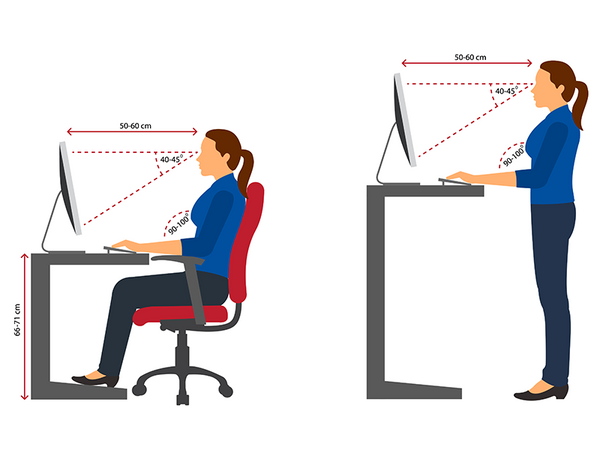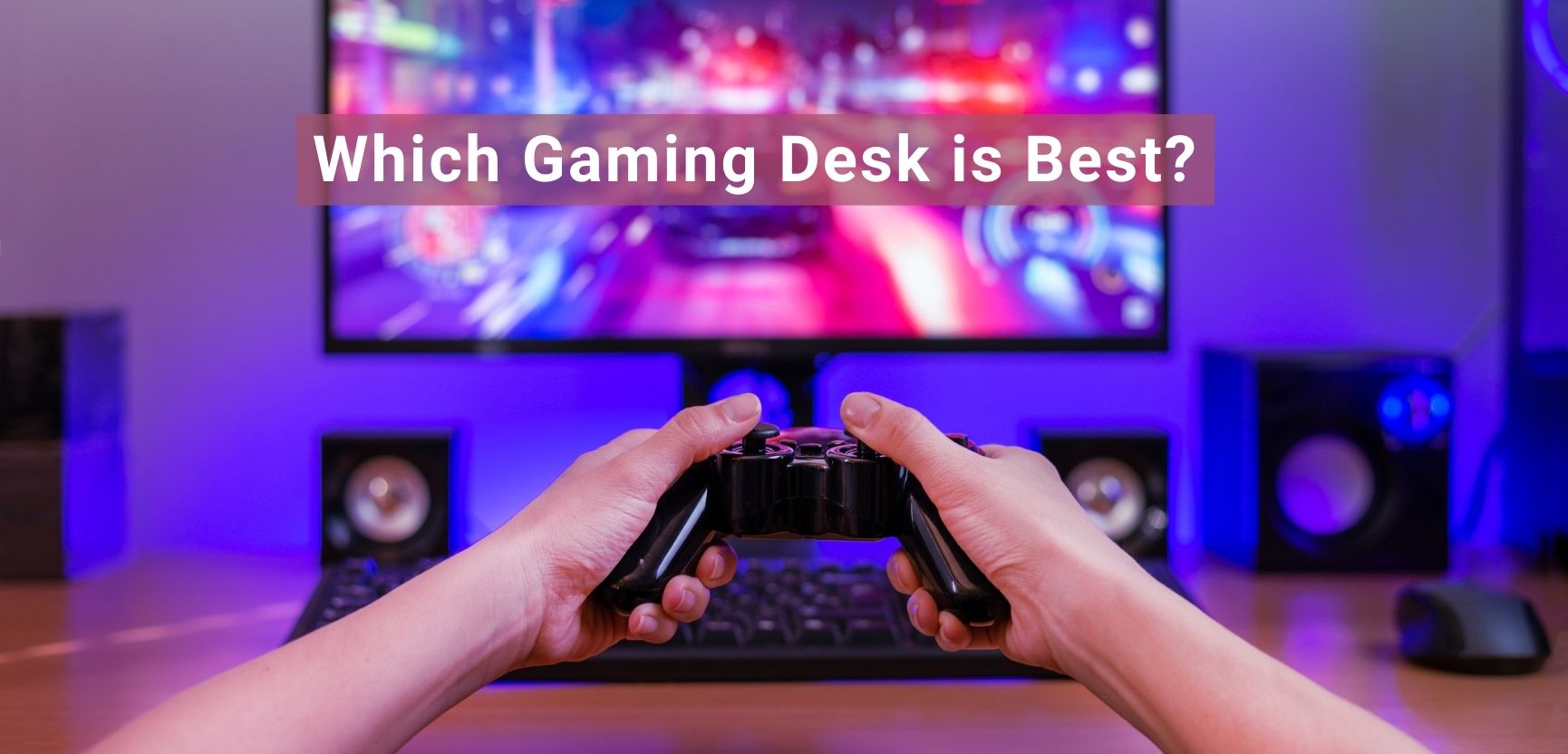Proper workstations require proper work equipment. If you're sitting at your desk for an entire day of projects, deadlines, and clients, most likely your body is going to need a reprieve from its standard sitting position. Ergonomic chairs were introduced ages ago when workers complained of back problems due to prolonged improper posture and back pain while at their desk.
Today, a standing desk revolution has taken over the workforce. There are circumstances to consider when shopping for a standing desk, and whether or not the function of it is solely for standing, or if there's a feature that includes an automatic setting for returning to a seated position.
Now that you're ready to make the shift to a standing desk monitor, it's crucial to understand how the value of height and position enhances the flow of your work and proper standing desk posture. The proper height for a standing desk should generally be at elbow height with a 90-degree angle from the floor. Your eyes need to be looking at the top third of your monitor for ideal monitor height. The focal distance is also vital, as the screen needs to be placed about 24 inches away from your eyes to prevent eye strain and improper head tilting. Because of this, positioning the monitor lower rather than higher is better for overall health.

THE IMPORTANCE OF DESK MONITORS AND HOW THEY ENHANCE YOUR STANDING DESK ERGONOMICS
Your desk is the mainstay of your occupation, where your bright ideas and productivity flow. It makes sense for you to feel comfortable at your workstation, therefore alleviating any obstacles to the health benefits of a standing desk. Sitting all day promotes a litany of well-being issues, no matter how you slice it. If you invest in good shoes, a comfortable surface underneath your feet, and most importantly, a quality monitor that fits your desk height and positioning, you can step back and watch your genius rise.
The standing computer desks have a variety of modifications and could be used for working at the office or for building perfect office space at home. The most popular are the desks for dual monitors, but there are some custom models for three or even more monitors. The designers and graphic artists are people who require the most to place more than one monitor on a working desk. The IT and marketing specialists also often need to have more than one monitor to do their work efficiently. Nowadays, custom standing desks are gaining traction. This solution may afford anyone who wants it. The main question is how to use it properly?
Below are a few points to consider when using your desk monitor:
Height
The keyboard and your monitor all demand an acceptable standing desk monitor height. A keyboard height is the cornerstone of good posture. The position of the monitor should be about 40-45 degrees, where you're slightly looking down to the center of your screen. A proper rule of thumb is to gauge the monitor position to the top of your head.
Position
There has to be an optimal distance from the computer monitor to your standing position, so as to relieve any pressure on eye and back strain. If you're feeling neck strain, readjust the monitor so you have the freedom to move at your workstation and avoid too much stress on the back, shoulders, knees, elbows, and wrists. Versatility and adjustability improve the blood flow of your work productivity.
Capabilities
A desk monitor needs to be able to rotate and turn, depending on your best ergonomic monitor height. Furthermore, the last challenge you need is a desk with cluttered surroundings. If your standing desk monitor is at sufficient height and capable of movement, your screen’s resolution & orientation will coincide with the overhead lighting and any other sources of light coming into your periphery, such as window glare.
Durability
If the monitor has a lifelong guarantee, chances are your standing desk position and optimal desk height will align with the strength of the system you're working on and the keyboard with which it sits. Tweaking your monitor and standing position is normal throughout the day, especially while working with others or fatigue sets in. However, adjust your desk to fit your needs.
Workability
Situating your standing desk monitor for the highest quality in workstation workability has to include the angle, the movement, and the lighting. If these factors are adhered to, your daily grind can turn into something effective and beneficial for all involved.
FAQs
What height should a monitor be?
The position of the monitor should be about 40-45 degrees, where you’re slightly looking down to the center of your screen. A proper rule of thumb is to gauge the monitor position to the top of your head.
What is the proper height for a standing desk?
The proper height for a standing desk should generally be at elbow height with a 90-degree angle from the floor.
What is the ideal height for a computer monitor?
Your eyes need to be looking at the top third of your monitor for ideal monitor height. The focal distance is also vital, as the screen needs to be placed about 24 inches away from your eyes to prevent eye strain and improper head tilting.
Wrapping Up
Now that we've covered the elements of having a desk monitor for standing at work, the ergonomic factor will then play the largest role in comfort, security and wellness.
A properly functioning standing desk monitor that allows you to stand comfortably, work tirelessly, and feel creative is a boon to success. Try one and watch your work performance improve! Should you have any questions about standing desks, don’t hesitate to contact us!
sales@progressivedesk.com | 1-800-828-9414



